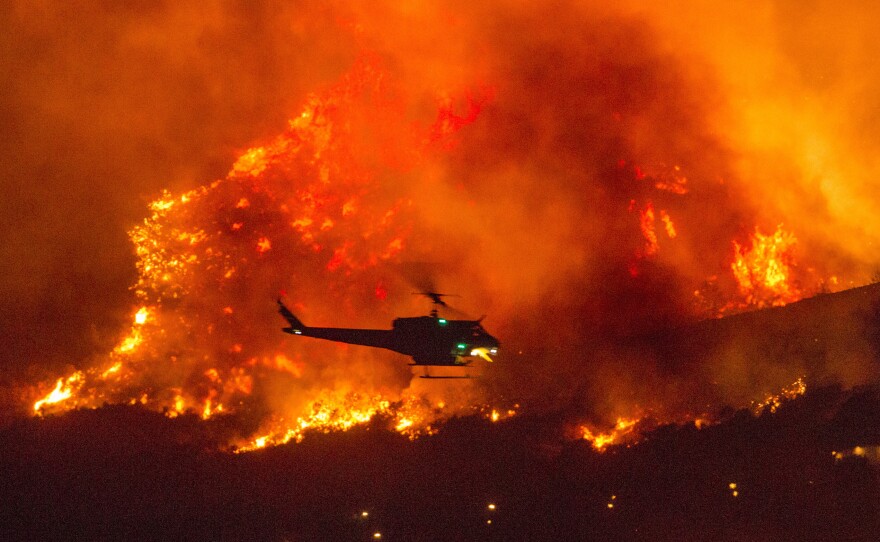Firefighters were working in extreme temperatures across the U.S. West and struggling to contain wildfires, the largest burning in California and Oregon, as another heat wave baked the region, straining power grids.
The largest wildfire of the year in California — the Beckwourth Complex — was raging along the Nevada state line and has burned about 134 square miles (348 square kilometers) as state regulators asked consumers to “conserve as much electricity as possible” to avoid any outages starting Monday afternoon.
In Oregon, the Bootleg Fire exploded to 224 square miles (580 square kilometers) as it raced through heavy timber in the Fremont-Winema National Forest, near the Klamath County town of Sprague River. The fire disrupted service on three transmission lines providing up to 5,500 megawatts of electricity to neighboring California.
A wildfire in southeast Washington grew to almost 60 square miles while in Idaho, Gov. Brad Little has mobilized the National Guard to help fight fires sparked after lightning storms swept across the drought-stricken region.
The blazes come as the West is in the midst of a second extreme heat wave within just a few weeks and as the entire region is suffering from one of the worst droughts in recent history.
On Sunday, firefighters working in temperatures that topped 100 degrees Fahrenheit (38 Celsius) were able to gain some ground on the Beckwourth Complex, doubling containment to 20%.
Late Saturday, flames jumped U.S. 395, which was closed near the small town of Doyle in California’s Lassen County. The lanes reopened Sunday, and officials urged motorists to use caution and keep moving along the key north-south route where flames were still active.
“Do not stop and take pictures,” said the fire’s Operations Section Chief Jake Cagle. “You are going to impede our operations if you stop and look at what’s going on.”
Cagle said structures had burned in Doyle, but he didn’t have an exact number. Bob Prary, who manages the Buck-Inn Bar in the town of about 600 people, said he saw at least six houses destroyed after Saturday’s flareup. The fire was smoldering Sunday in and around Doyle, but he feared some remote ranch properties were still in danger.
“It seems like the worst is over in town, but back on the mountainside the fire’s still going strong,” Prary said.
In Arizona, a small plane crashed Saturday during a survey of a wildfire in rural Mohave County, killing both crew members.
The Beech C-90 aircraft was helping perform reconnaissance over the lightning-caused Cedar Basin Fire, near the tiny community of Wikieup northwest of Phoenix.
Officials on Sunday identified the victims as Air Tactical Group Supervisor Jeff Piechura, 62, a retired Tucson-area fire chief who was working for the Coronado National Forest, and Matthew Miller, 48, a pilot with Falcon Executive Aviation contracted by the U.S. Forest Service. The National Transportation Safety Board is investigating the crash.
A wildfire in southeast Washington had burned almost 60 square miles (155 square kilometers) as it blackened grass and timber while it moved into the Umatilla National Forest.
In Idaho, Gov. Brad Little declared a wildfire emergency Friday and mobilized the state’s National Guard to help fight fires sparked after lightning storms swept across the drought-stricken region.







